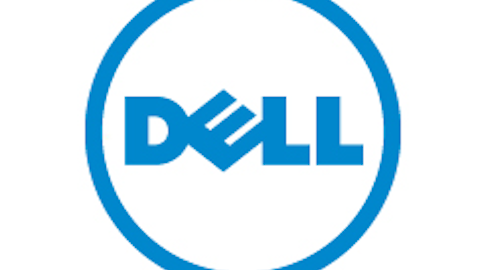I’ll admit that sometimes companies surprise me with their dividend increases. I feel like I have a good handle on which companies are reliable dividend payers, and which ones aren’t. Consider this, from the beginning of 2012 until now, Seagate Technology PLC (NASDAQ:STX) has increased their dividend by 52%. Very few companies can claim such a huge increase in such a small amount of time.
A Terabyte Sized Hole In This Theory
I know that some investors are already skeptical because I’m referring to a company that makes hard drives. The popularity of streaming audio and video, flash memory, and cloud storage, might suggest that the traditional hard drive is dead. There is just one big hole in that theory, no one told Seagate or their main competitor Western Digital Corp. (NASDAQ:WDC).

The Industry Is Growing?
If you look at market research for the hard drive industry, there are two things driving Seagate and their competition forward. First, the proliferation of smartphones and tablets creates a storage need that these devices just can’t handle. For every picture or video shot on a smartphone, there is a need to store these files. When a consumer can buy a 1 TB Seagate external drive for $86 on Amazon.com, Inc. (NASDAQ:AMZN), or buy 1 TB of cloud storage from Amazon for $500 a year, there is no real decision to be made.
The second growth driver is the shortage in the hard drive market caused by the Thailand floods. These floods disrupted the supply chain, and caused a shortage that isn’t expected to be resolved fully until 2014 according to some experts. In addition, hard drive shipments are expected to increase, “at least through 2016”. This increase is expected to be driven by the increased need to store digital content, and from enterprise sales. Microsoft and Intel investors take note, as these companies dominate the enterprise space.
Third, Windows 8 is expected over time to move customers to replace their computers. Windows 8 just works better with a touch screen device, and this wasn’t a standard feature on most desktop or laptop systems in the last several years. Intel’s development of the Ultrabook segment would seem to spell the death of traditional hard drives, but in most cases manufacturers are sticking with ultra light traditional mobile hard drives.
A Market Leader With A High Yield
Seagate reported earnings recently that beat expectations. Revenue increased nearly 15%, but EPS increased just slightly. However, EPS was affected primarily by higher expenses from the Samsung hard drive business acquisition and the LaCie acquisition. Seagate estimated that it took 43% market share in the last three months.
While Western Digital did show better revenue and EPS growth, the comparison is a bit unfair because of the previously mentioned acquisition expenses for Seagate. In addition, Seagate beat Western Digital in two areas of particular importance to investors. First, Seagate grew free cash flow by 199% versus 103.88% growth at Western Digital. Second, Seagate’s current yield of 4.5% is significantly higher than Western Digital at 2.14%.
Are There Other Options? Yes…But…
To be fair, there are a few ways to play the “non-death” of the hard drive industry. First, Microsoft should be a beneficiary as Windows 8 ramps up and more customers become accustomed to its touch screen capabilities. Seagate’s lineup of solid-state and traditional hard drive options are cheap components that could make touch capable laptops just as appealing as some tablets. Microsoft’s yield of 3.29%, and forward P/E ratio of 9.8 is attractive. The company’s push into mobile devices with the Surface tablet and Windows Phone could lead to better mobile sales as well.
A second option would be to look at Intel. Like Seagate and Western Digital, some investors think Intel is being left behind with the mobile revolution, but don’t count Intel out yet. The company’s 4.21% yield helps while patient investors wait for Intel’s mobile investments to pay off. In addition, the stock trades for about 11 times earnings and analysts are calling for over 12% EPS growth in the next few years. As the overall computing and smartphone market grows, you can bet that Intel will find a way inside.
However, Seagate looks like an excellent choice at current prices. The shares trade for just 6.4 times projected earnings, and though analysts are calling for stagnant growth, the combination of a growing market and pricing power argues otherwise. With a high yield that is covered by a free cash flow payout ratio of just 24%, Seagate has the best combination of yield and payout ratio among the companies we’ve looked at. With a low payout ratio and a nice yield, it’s not hard to see how Seagate could help investors drive nice returns for their portfolio.
The article Huge Dividend Growth In An Unexpected Place originally appeared on Fool.com and is written by Chad Henage.
Copyright © 1995 – 2013 The Motley Fool, LLC. All rights reserved. The Motley Fool has a disclosure policy.





